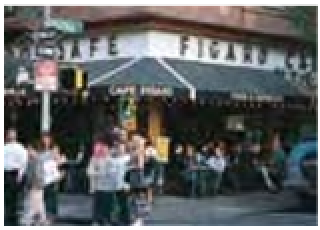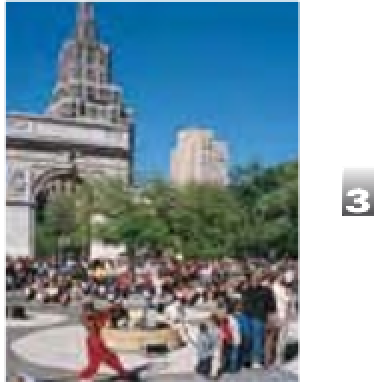Travel Reference
In-Depth Information
Gertrude Vanderbilt Whitney, who
established the first Whitney
Museum in 1914 at 8 West 8th
Street, adjoining her studio.
d
East
of MacDougal Street, between 8th St &
Waverly Pl
•
Map M3
Washington Mews
Another group of stables
turned into houses around 1900,
the Mews attracted both writers
and artists. No. 14A housed, at
various times, author John Dos
Passos and artists Edward Hopper,
William Glackens, and Rockwell
Kent. Writer Sherwood Anderson
often stayed at No. 54 with his
friend and patron, Mary Emmett.
In contrast to the modern buildings
in much of Manhattan, this type
of quaint enclave is the reason
many find the Village so appealing.
d
University Place to 5th Avenue
•
Map M3
Washington Square Park
In 1826, a marshy area was
filled to form this popular park. The
newly-restored marble arch by
Stanford White went up in 1895,
replacing a wooden version that
marked the centenary of George
Washington's inauguration. Mothers
with strollers, chess players, and
young lovers now occupy benches
where drug dealers once reigned.
The fountain in the center is where
Bob Dylan sang his first folk songs.
d
5th Avenue, between Waverly Pl &
4th St
•
Map N3
Grove Court
This group of six townhouses
in a bend in the street was
developed by grocer Samuel
Cocks, who thought that having
residents nearby would help his
business at No. 18. But while
such private courts are prized
today, they were not considered
respectable in the 1850s, and the
disreputable types who moved in
earned it the nickname “Mixed
Ale Alley.” O. Henry used the block
as the setting for
The Last Leaf
.
d
Grove Street near Bedford St
•
Map N3
MacDougal Alley
These 19th-century stables
for the fine homes on Washington
Square North were converted into
studios by artists early in the 20th
century, causing the street to be
known as “Art Alley de Luxe.”
Among the residents were painter
Guy Pene du Bois and sculptor
Left
MacDougal Street
Right
Grove Court
105











